No products in the cart.
Small Gothic Armor (88116)
Miniature Armor, Victorian period, hand forged, 1820
dimensions: 30″(H) x 8.5″ (W)
rotating helmet, raiseable visor
This suit of miniature armor was acquired from a private collection in Milan. The piece is a Victorian reproduction dated to on or around 1820 CE. It stands 30” in height.
The design of this armor is clearly intended to be Gothic – the couters, gauntlets, and cuisses are all classically Maximillian, and the fluting on the surface of the cuirass and elsewhere are undeniably intended to replicate the patterns of 15th – 16th century armors that would exemplify the Gothic style. A brief chain skirt protects the lower body, and an s-guard longsword (possibly intended to imply Swiss inspiration, perhaps a mercenary) is held in the right hand. While the suit is not fully articulate, the helm can rotate and the visor can be raised if so desired.
The Victorian origins, style of armor reproduced, and non-articulating construction of the piece points to this piece’s likely purpose as a collectible for a wealthy patron. The nineteenth-century “Gothic revival” obsession likely resulted in many such reproductions being created, which is almost certainly the origin of this piece as well.
USD800.00
1 in stock



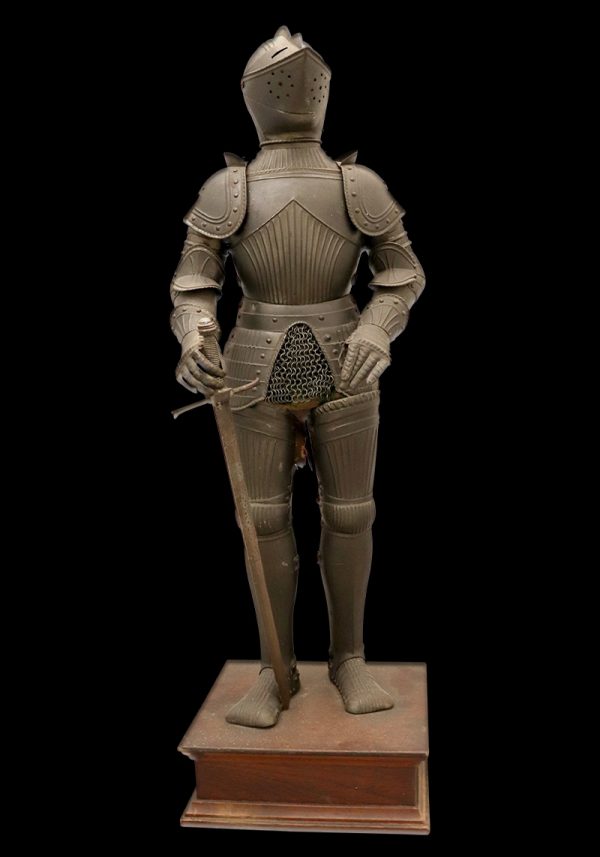
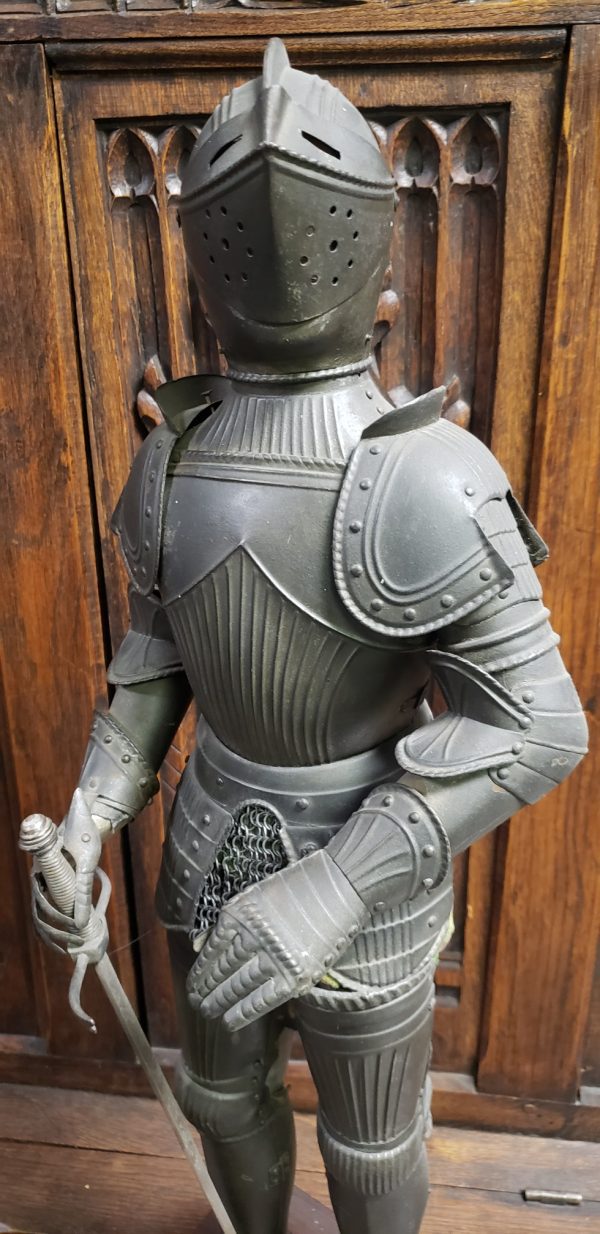
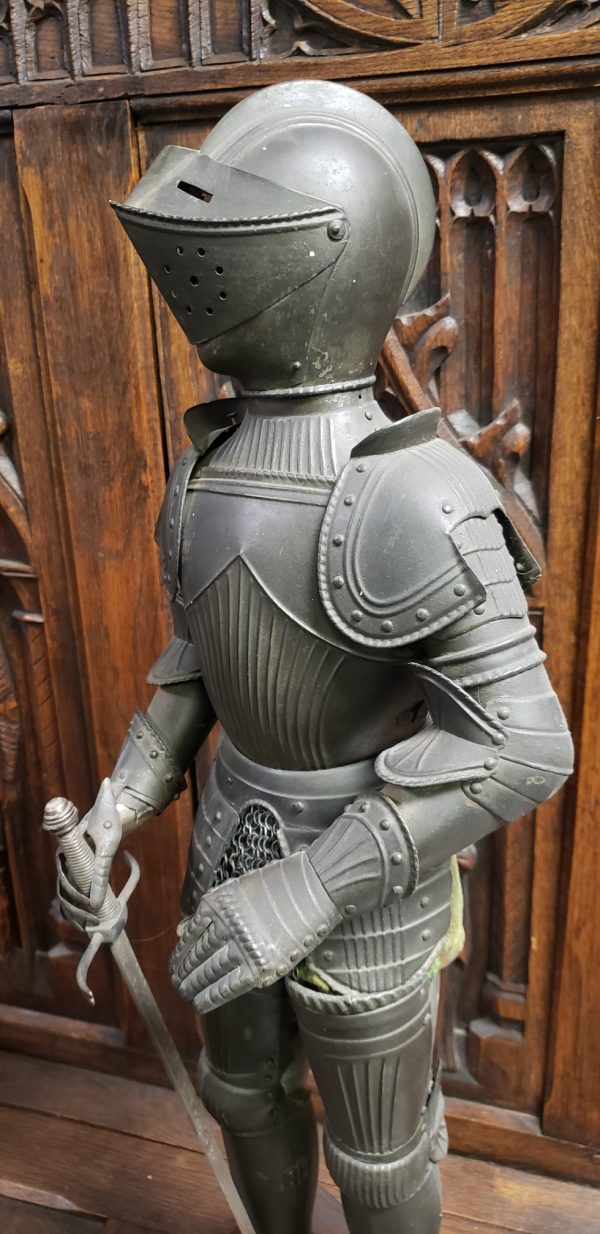
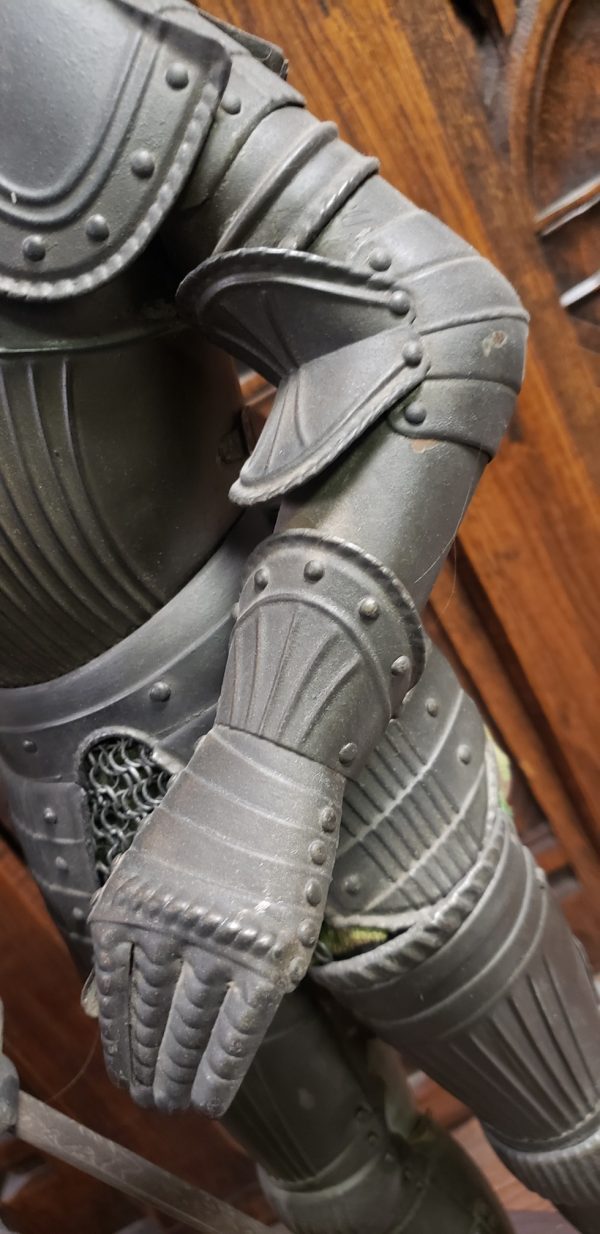
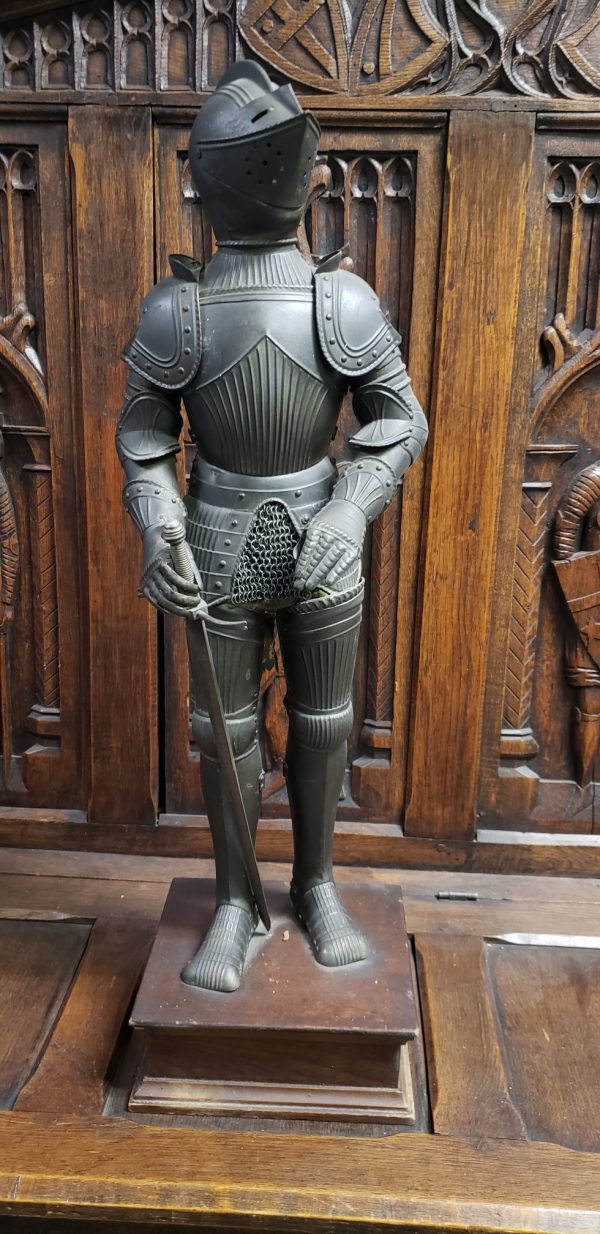
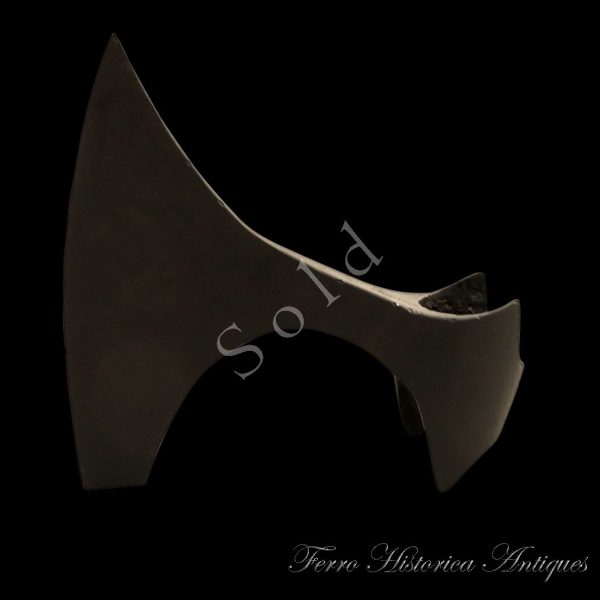
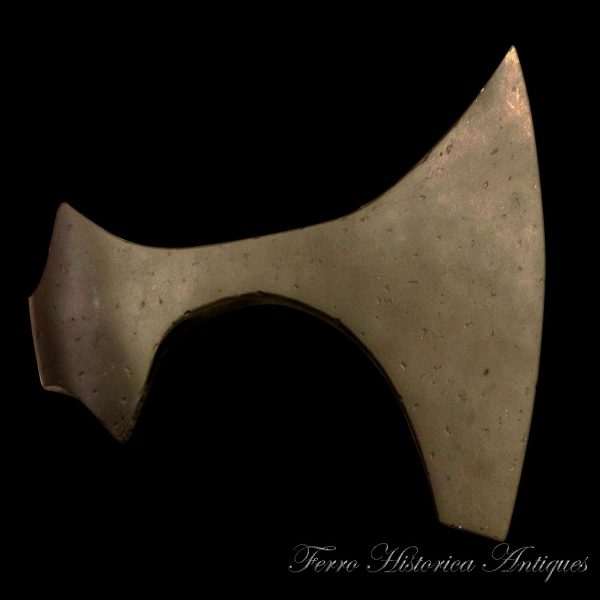
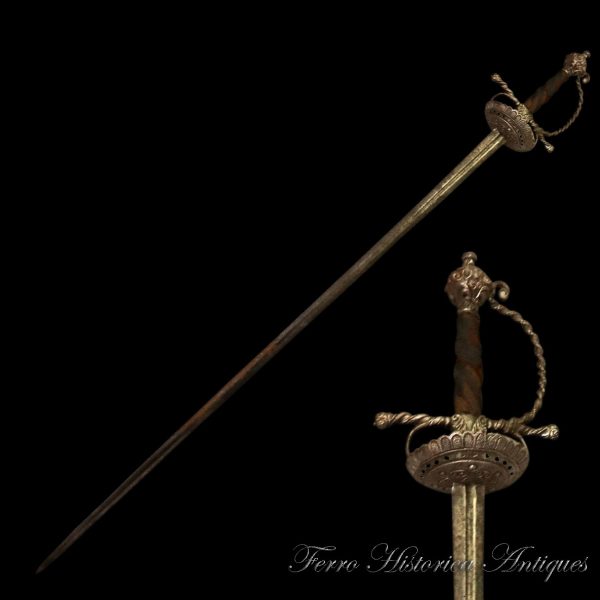
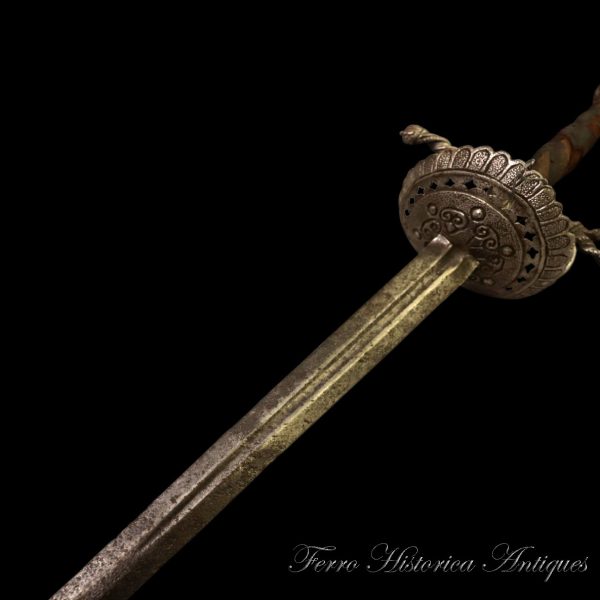
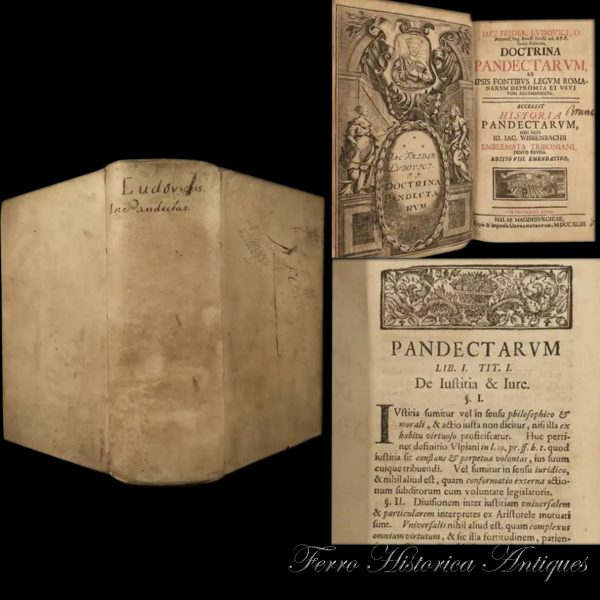
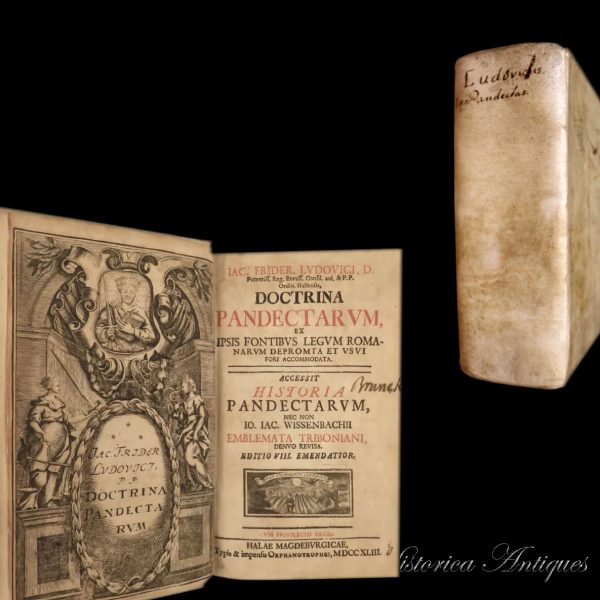
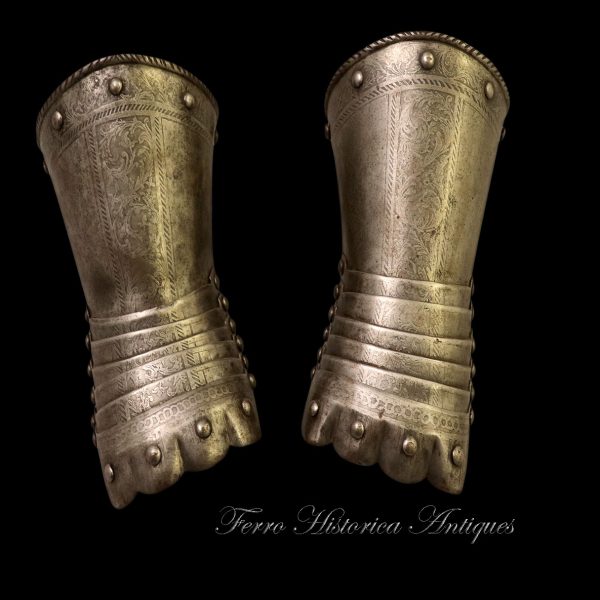
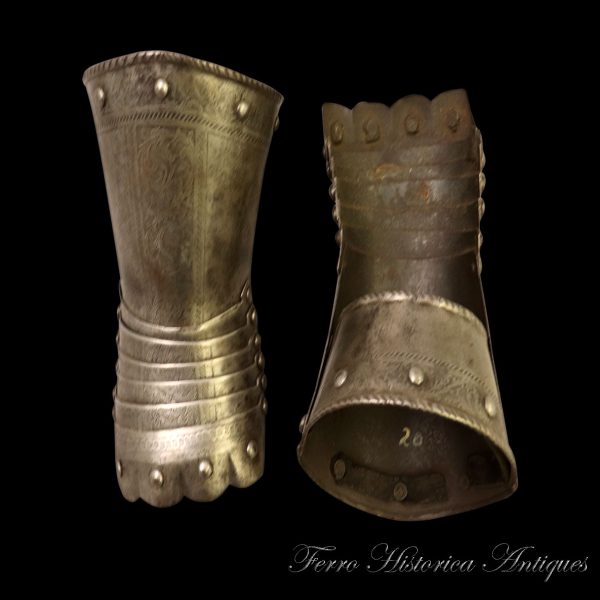
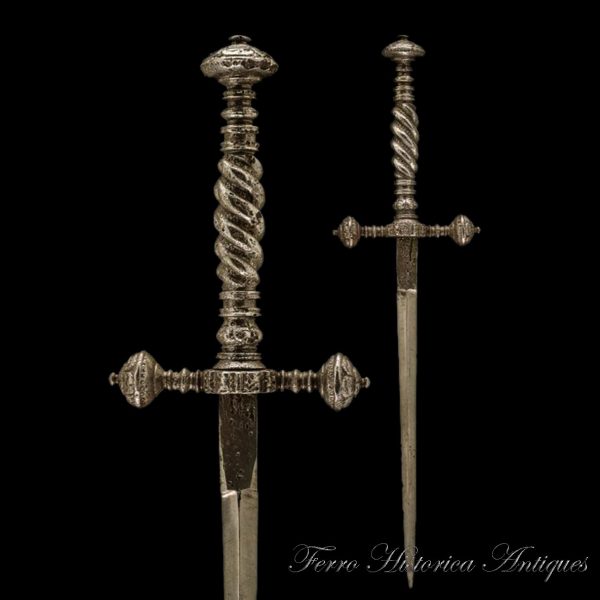
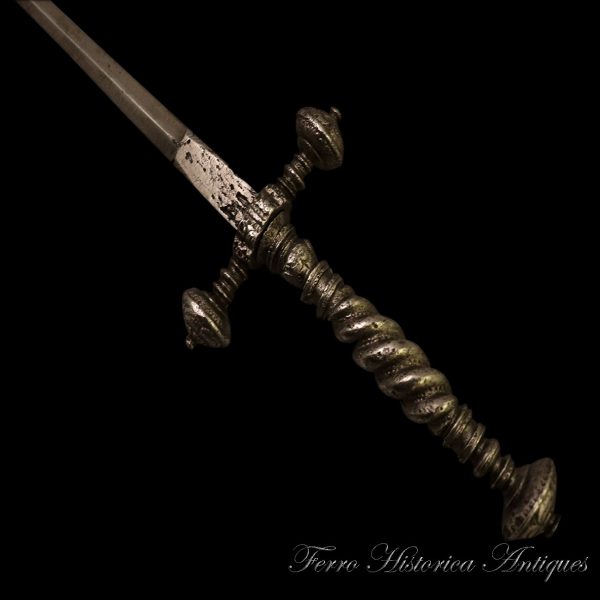
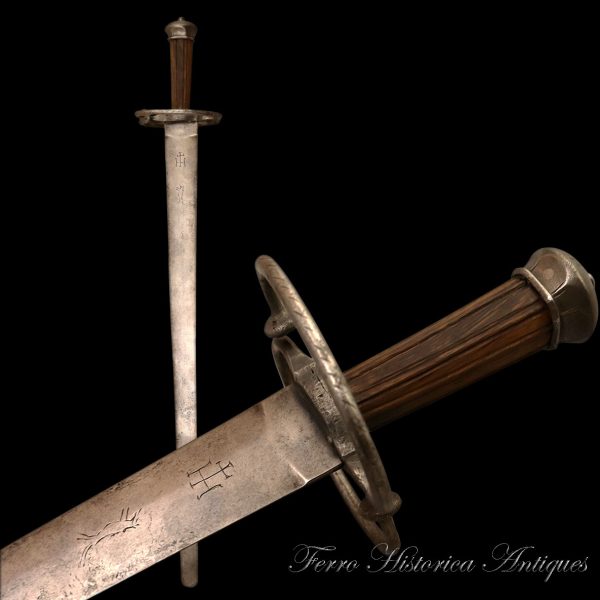
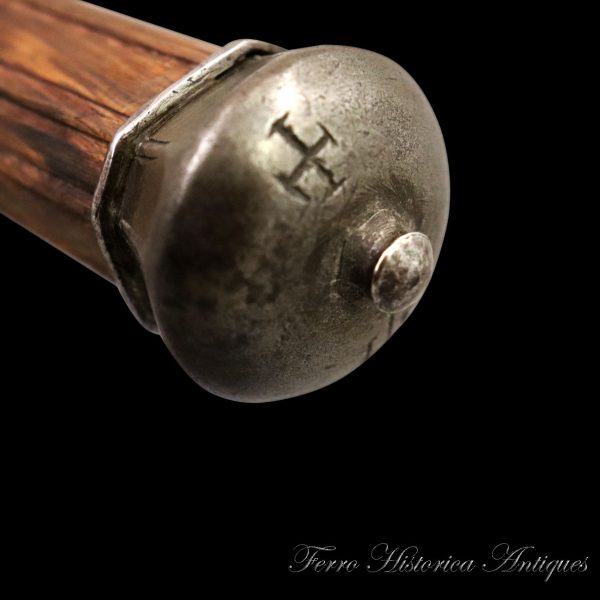
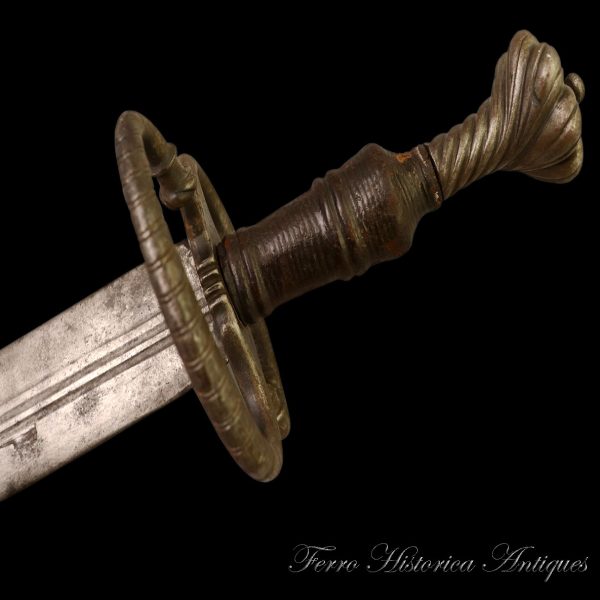
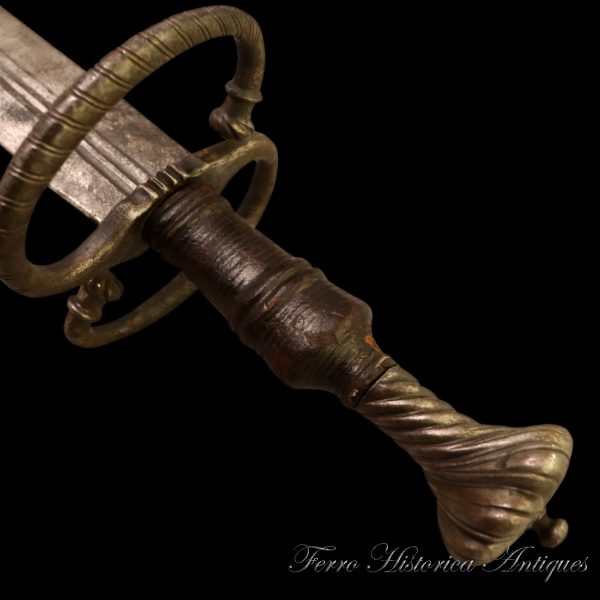
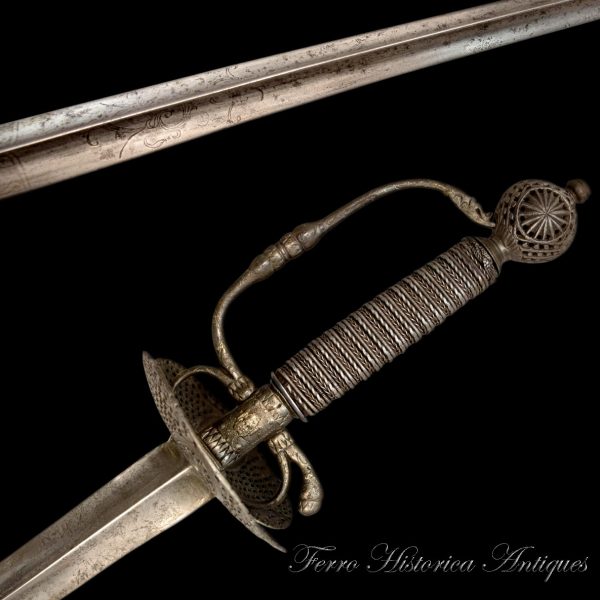
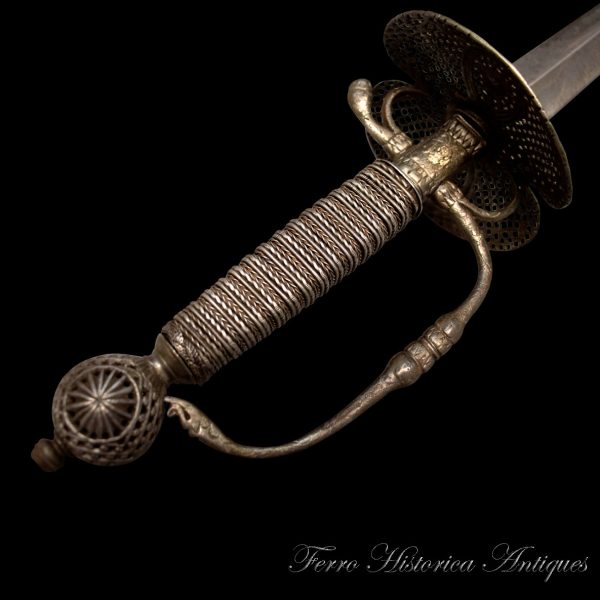
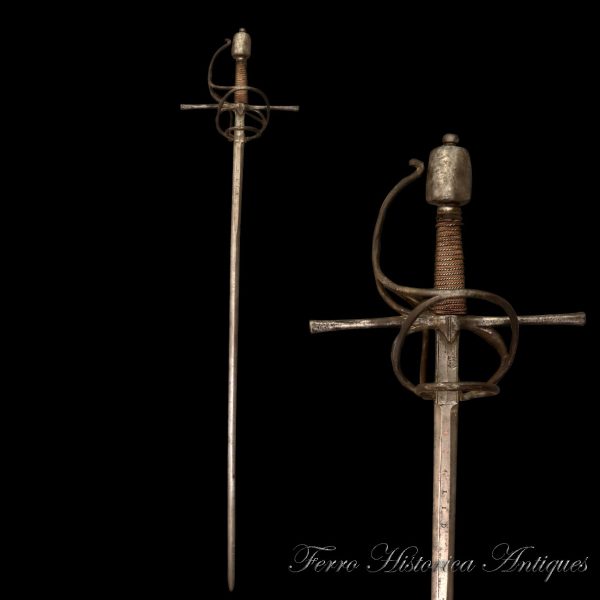
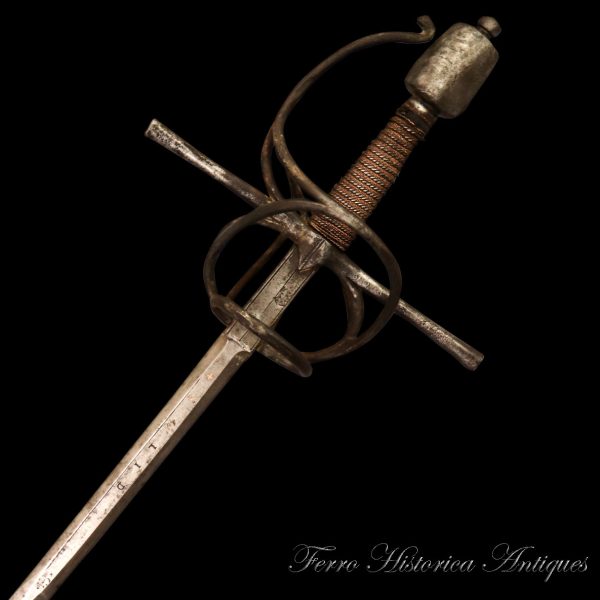
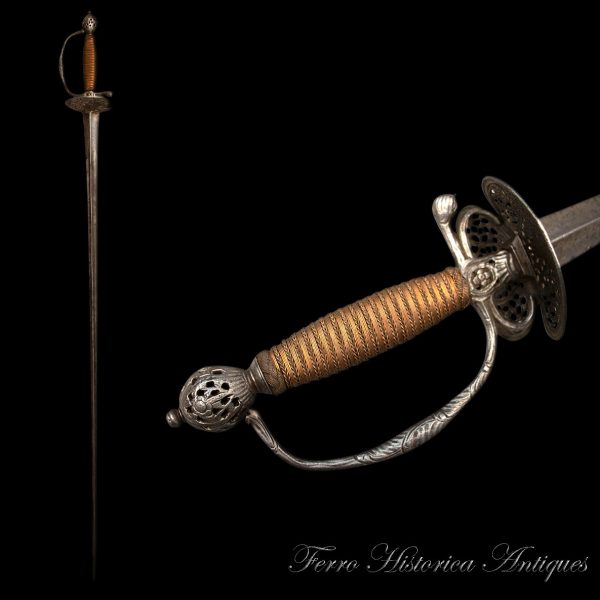
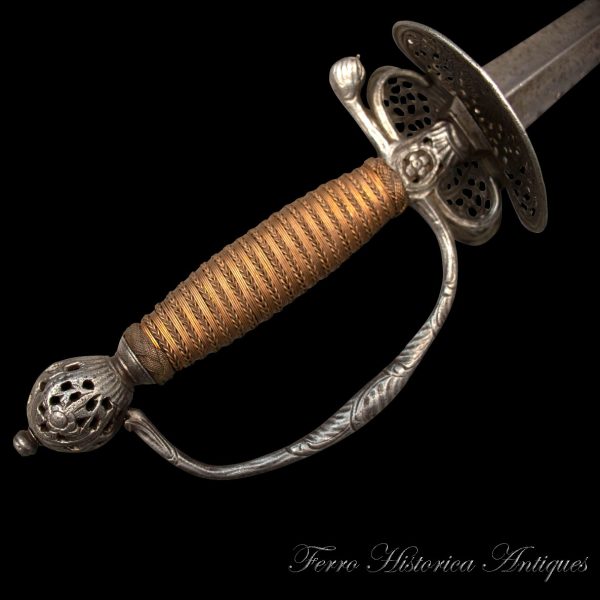
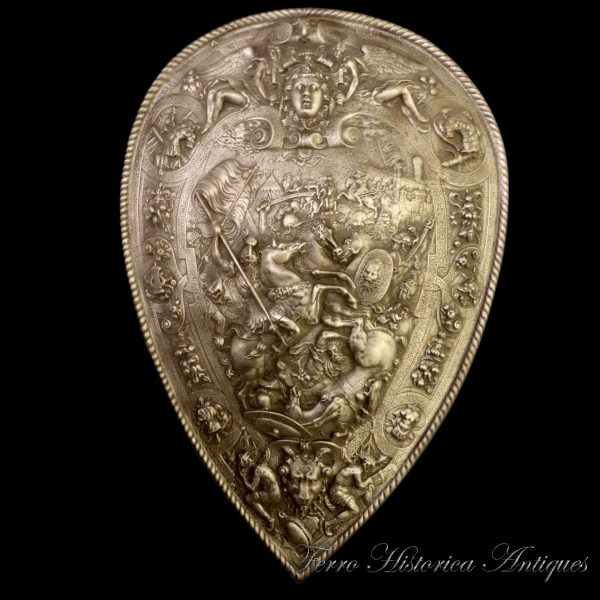
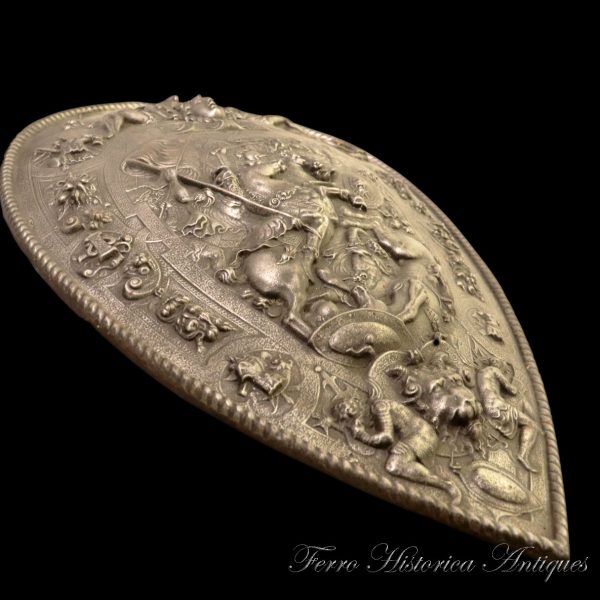
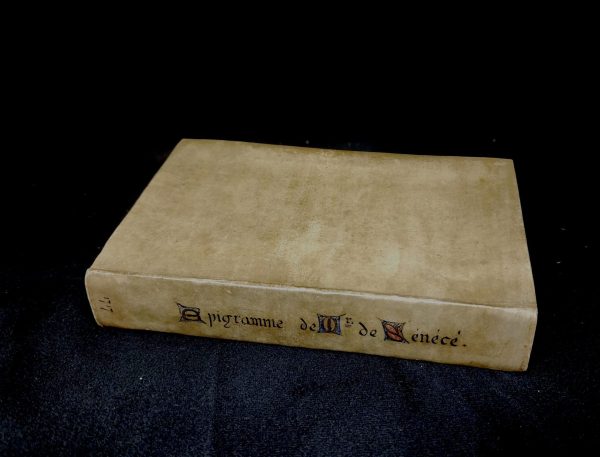
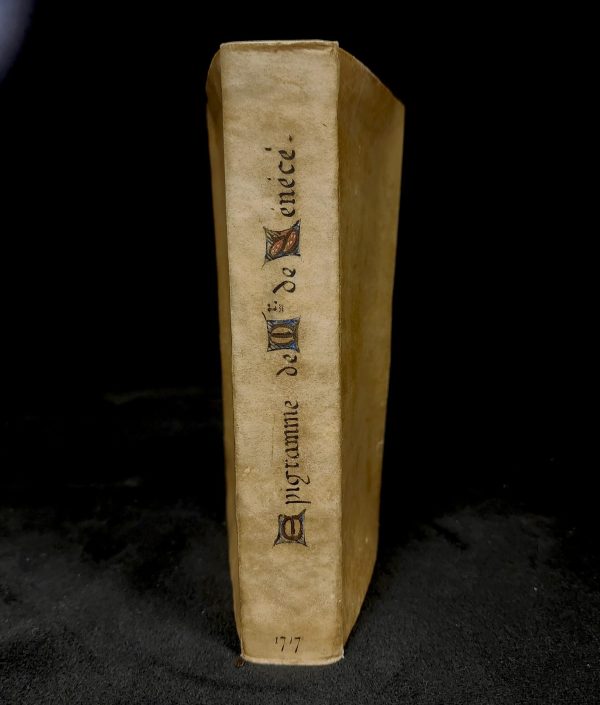
Reviews
There are no reviews yet.